Material Collection
Low Embodied Carbon Materials
37% of annual global carbon emissions come from buildings - this number is composed of embodied and operational carbon. Embodied Carbon, the sourcing and manufacturing of materials and products contribute significantly to the changing climate. Carbon emissions within the building industry used to focus on energy consumption from operating buildings once they are inhabited. But carbon emitted from the production, transportation, installation, maintenance, repair and disposal of a building product is significant. Embodied carbon will be responsible for almost 50% of total new construction emissions by 2060.
This list considers emissions before a product is transported to the construction site. We look specifically at greenhouse gas emissions from extracting raw materials, transportation to the factory, and manufacturing a product (A1-A3 of a product's lifecycle).
Currently, there is no universal threshold for 'low embodied carbon' in materials. After discussing this research with experts, we set a rigorous standard that can meet 2030 goals. These products, labeled with 'LEC', embody below 5 kgs of CO₂eq per square meter.
Below are a few examples of low embodied carbon materials that meet our rigorous evaluation. For further help on your own search, scroll down to "Spec Guidance”.
*Products in this collection meet criteria for both material health and low embodied carbon.
Low Embodied Carbon Materials
27 products
About Our Collections
The goal of our collections is to help promote transparency in the material ingredients of building products by fostering knowledge and awareness of products and materials for which life-cycle information is available, and that have environmentally, economically, and socially preferable life-cycle impacts.
Keep an eye out for the following symbols:
A Healthier Affordable Building Product
Products with the designation of "Healthier & Affordable" were specified and installed in at least one of our Case Studies of healthier affordable housing.
Available at the Donghia healthier Materials Library
The Donghia healthier Materials Library library is open to Parsons student and faculty. Learn more about access and opening hours here.
Low Embodied Carbon
“Embodied Carbon” is the total amount of carbon emitted during the process of making a material. *HML refers to a manufacturer's EPD to determine whether a product's A1-A3 carbon emissions falls within HML's threshold for Low Embodied Carbon.
New Product
This product has been added to the collection within the past six months.
Product in Development
Products with this designation identify they are currently scaling or only available in markets outside of the building industry. they could be experimental or in use in capsule collections.
Available in the EU
Products with this designation are currently available only in the European Union and identified as being an exemplary healthy option in the respective product group.
Ingredient Disclosures
There are several ways of evaluating a material’s health that we include with product information. Disclosures are reports by manufacturers about product ingredients, impacts, or other attributes.
Key Disclosures include:
Health Product Declaration (HPD)
A voluntary technical specification for reporting information on product contents and associated health information, intended to be the health-analogue to Environmental Product Declarations (EPDs).
Declare Label
Declare is a transparency platform and product database that answers three questions:
1. Where does a product come from?
2. What is it made of?
3. Where does it go at the end of its life?
Environmental Product Declaration (EPD)
A standardized format for communicating the environmental effects associated with a product’s raw materials extraction, energy use, chemical makeup, waste generation, and emissions to air, soil, and water.
Safety Data Sheet (SDS)
A reporting format that provides basic information about a material’s chemical ingredients, the potential safety hazards to installers, and recommended practices for installation.
USDA Certified Biobased Product Label
Managed by the U.S. Department of Agriculture (USDA), the goal of the BioPreferred Program is to increase the purchase and use of biobased products.
Other
| Manufacturer | Product | Ingredient Disclosures |
|---|---|---|
| Knauf Insulation | EcoBatt |
EcoBattLow-Embodied Carbon MaterialEcoBatt Insulation is free of formaldehyde, acrylics, and artificial colors. This insulation combines post-consumer recycled bottle glass and Knauf’s ECOSE Technology. It can be used for walls, ceilings, sound control, floors, attics, and mid-floor applications. This product is Declare Red List Free. It has also achieved a Greenguard Gold Certification, which ensures that it meets strict standards for VOC emissions. Per EPD, this product meets HML's criteria for low embodied carbon - thanks in large part to its use of recycled materials. Knauf currently has 27 productions across the US, Europe, and the Middle East. When specifying this product be sure to consider the distance it will travel to your site. Ecobatt's R-value range is declared between 8-49. CategoryInsulation / Fibrous, Cellulosic, Granular, FiberglassManufacturerKnauf Insulation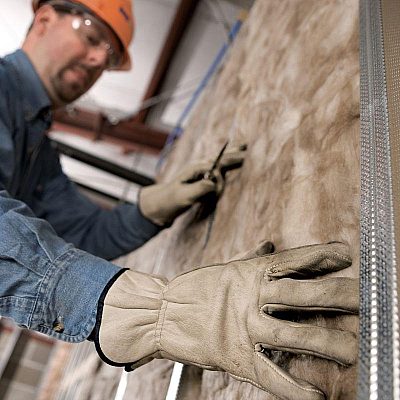
Material composition*Glass oxide <100%,Syrups, hydrolyzed starch <10%, Ammonium Sulfate 1-5%, Mineral Oil 1-5%, Silane <1% *as reported by the manufacturer AVAILABLE SIZINGAvailable in a variety of sizes and thicknesses for wood and metal framing COLORSTaupe CERTIFICATIONS & DISCLOSURES
Health Product Declaration (HPD)
Declare Label
Environmental Product Declaration (EPD)
Safety Data Sheet (SDS)
USDA Certified Biobased Product Label
Other
GREENGUARD | Gold
Declare | Red List Free
Contributes to LEED credits
Additional DocumentsLast UpdatedDecember 16, 2025 |
| Knauf Insulation | Jet Stream Ultra |
Jet Stream UltraUsed in Healthier Affordable HousingAvailable At the Donghia Materials LibraryLow-Embodied Carbon MaterialKnauf Insulation Jet Stream ULTRA is an unbonded, fibrous glass blowing insulation that is designed to be used in attics or with the BIBS system (Blown-in-Blanket System). This product is Declare Red List Free, and meets the strict VOC emission standards for the Greenguard Gold Certification. Additionally, it is made with over 60% post-consumer recycled glass (cullet) content. Per Knauf's product-specific EPD, Jet Stream Ultra meets HML's criteria for low embodied carbon. Knauf currently has 27 production across the US, Europe, and the Middle East. When specifying this product be sure to consider the distance it will travel to your site. Jet Stream's R-value range is declared between 11-60 per inch. CategoryInsulation / Fibrous, Cellulosic, Granular, FiberglassManufacturerKnauf Insulation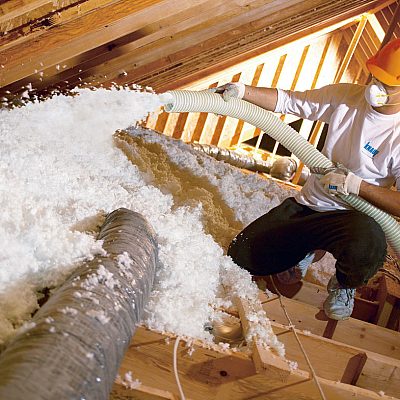
Material composition*Post Consumer Cullet 59.3%, Sand 17.3%, Borax 9.2%, Soda Ash 5.1%, Quicklime 3.7%, in-house cullet 2.5% *as reported by the manufacturer AVAILABLE SIZING32 lb Package COLORSWhite CERTIFICATIONS & DISCLOSURES
Health Product Declaration (HPD)
Declare Label
Environmental Product Declaration (EPD)
Safety Data Sheet (SDS)
USDA Certified Biobased Product Label
Other
Declare | Red List Free
GREENGUARD | Gold
Contributes to LEED credits
Additional DocumentsLast UpdatedFebruary 20, 2025 |
| Roxul | Safe |
SafeUsed in Healthier Affordable HousingAvailable At the Donghia Materials LibraryLow-Embodied Carbon MaterialSafe is batt insulation made from mineral wool that provides acoustic dampening and is non-combustible. Safe N Sound is similar to Rockwool's Safe product but is primarily for interior applications. It is Greenguard Gold Certified, meaning it meets strict requirements for VOC and formaldehyde emissions. This product meets HML's low embodied carbon standards per Rockwool's EPD for its stone wool insulation. Production facilities are located in the US and Canada. For shorter transportation, the North American Market is therefore preferable. Rockwool's Ontario location uses a substantial amount of recycled material. *NOTE: This product contains phenol-formaldehyde. According to the manufacturer: "Phenol formaldehyde is allowed in rigid mineral wool insulation for exterior applications (such as rain screen assemblies or foundation insulation). While rigid mineral wool insulation does contain some formaldehyde, most of the formaldehyde is eliminated in the production process through a chemical reaction and high heat. Rigid mineral wool insulation installed on the exterior of the building possess less risk to humans and ecosystem than rigid foam insulation products, which almost always contain HFRs and use blowing agents with high global warming potential." Roxul's R-value range is declared at 4.2/inch. CategoryInsulation / Fibrous, Cellulosic, Granular, Mineral FiberManufacturerRoxul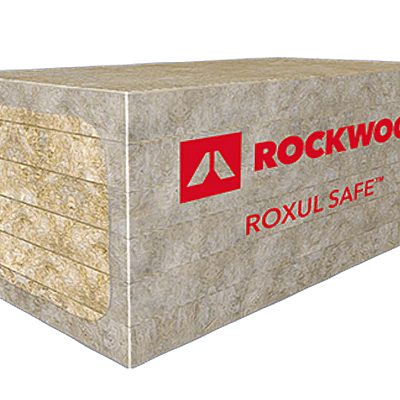
Material composition*Stone Wool Biosoluble 95-100%, Syrups Hydrolyzed Starch 1-2%, Phenolic Formaldehyde Binder 0-1%, Urea Binder 0-1% *as reported by the manufacturer AVAILABLE SIZINGAvailable in a variety of sizes and thicknesses for wood and metal framing COLORSTaupe CERTIFICATIONS & DISCLOSURES
Health Product Declaration (HPD)
Declare Label
Environmental Product Declaration (EPD)
Safety Data Sheet (SDS)
USDA Certified Biobased Product Label
Other
GREENGUARD | Gold
Contributes to LEED credits
Additional DocumentsLast UpdatedDecember 16, 2025 |
| Havelock Wool | Wool Batt Insulation |
Wool Batt InsulationAvailable At the Donghia Materials LibraryLow-Embodied Carbon MaterialSheep's wool provides a healthy and comfortable choice for insulation. Wool is naturally flame resistant. Additionally, wool's unique structure (a hydrophobic exterior and hydrophilic interior) allows it to absorb up to 35% of its weight in moisture from a room. When used as insulation, this gives wool the unique capacity to manage both humidity and temperature. Batt insulation requires the material to hold its shape. Traditional batts are held together with chemical additives. Havelock Wool's uses needle punching to hold their product together, avoiding toxic chemicals. Per Havelock's EPD, this product meets HML's criteria for low embodied carbon. Havelock's wool insulation are produced in Reno, NV, making its application most impactful on projects in western United States. *Note: Havelock's Loose Fill Insulation has R values of 4.3 and also meets HML's criteria for low embodied carbon. CategoryInsulation / Fibrous, Cellulosic, Granular, WoolManufacturerHavelock Wool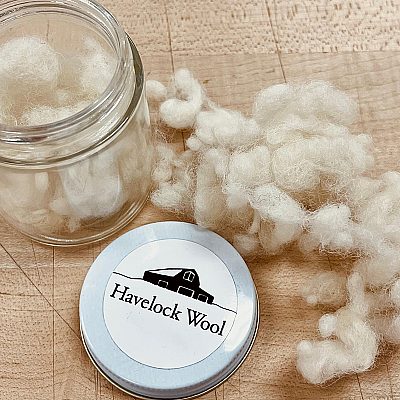
Material composition*Wool, Boric Acid *as reported by the manufacturer AVAILABLE SIZING15.5" wide rolls, available in 2", 3", and 5.5" thicknesses CERTIFICATIONS & DISCLOSURES
Health Product Declaration (HPD)
Declare Label
Environmental Product Declaration (EPD)
Safety Data Sheet (SDS)
USDA Certified Biobased Product Label
Other
Last UpdatedDecember 16, 2025 |
| Amorim Isolamentos | Thermacork Standard Insulation |
Thermacork Standard InsulationAvailable At the Donghia Materials LibraryLow-Embodied Carbon MaterialThermacork is a 100% natural, renewable, recyclable, and biodegradable rigid-insulation material produced from natural cork. Under the effect of pressure and superheated steam, cork granules expand and are agglomerated, originating blocks, avoiding any type of added adhesives. Cork forests benefit the environment, acting as habitats for a diverse range of species and providing a carbon sink that captures CO2 and greenhouse gases from the atmosphere. Per EPD, this product meets HML's criteria for low embodied carbon. Like most cork producers, Amorim Isolamentos, S.A. is based in Portugal. Thermacork's R-value is declared at 4/inch. CategoryBoard Insulation, CorkManufacturerAmorim Isolamentos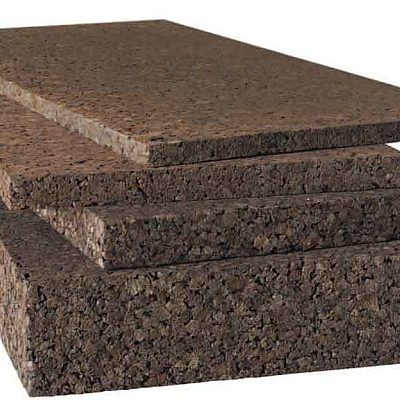
Material composition*100% cork (suberin, lignin and cellulose). *as reported by the manufacturer AVAILABLE SIZING8"x 39” Panel - Available in a variety of thicknesses COLORSBurnt Cork CERTIFICATIONS & DISCLOSURES
Health Product Declaration (HPD)
Declare Label
Environmental Product Declaration (EPD)
Safety Data Sheet (SDS)
USDA Certified Biobased Product Label
Other
Declare | Red List Free
FSC Certification
Last UpdatedJanuary 30, 2025 |
| Roxul | Comfortboard 80 |
Comfortboard 80Available At the Donghia Materials LibraryLow-Embodied Carbon MaterialComfortboard 80 is a mineral wool insulation for below grade applications. This product meets HML's low embodied carbon standards per Rockwool's EPD for its stone wool insulation. Production facilities are located in the US and Canada. For shorter transportation, the North American Market is therefore preferable. Amongst all it's facilities, Rockwool's Ontario location uses the highest amount of recycled material. Comfortboard 80 R value is declared as up to R21. Per Roxul's EPD, this product meets HML's criteria for low embodied carbon.*NOTE: This product contains a higher percentage of phenol-formaldehyde. According to the manufacturer: "Phenol formaldehyde is allowed in rigid mineral wool insulation for exterior applications (such as rain screen assemblies or foundation insulation). While rigid mineral wool insulation does contain some formaldehyde, most of the formaldehyde is eliminated in the production process through a chemical reaction and high heat. Rigid mineral wool insulation installed on the exterior of the building possess less risk to humans and ecosystem than rigid foam insulation products, which almost always contain HFRs and use blowing agents with high global warming potential." Roxul's R-value range is declared at 4.2/inch. CategoryInsulation / Fibrous, Cellulosic, Granular, Mineral FiberManufacturerRoxul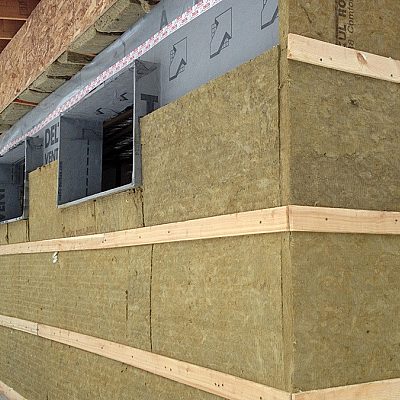
Material composition*Stone Wool 95%-100%, Syrups, Hydrolyzed Starch 1-2%, Phenol-formaldehyde 0-5%, Urea 0-1%, Undisclosed 0-1% *as reported by the manufacturer CERTIFICATIONS & DISCLOSURES
Health Product Declaration (HPD)
Declare Label
Environmental Product Declaration (EPD)
Safety Data Sheet (SDS)
USDA Certified Biobased Product Label
Other
Last UpdatedFebruary 21, 2025 |
| Graphenstone | Graphenstone |
GraphenstoneAvailable At the Donghia Materials LibraryLow-Embodied Carbon MaterialGraphenstone has updated traditional lime paint formulas with their product by adding graphene, a material made from carbon. Graphene lends the paint extreme strength, durability, and washability. Additionally, the use of lime creates a paint that is not only free of harmful substances, but one that also actively improves indoor air quality by absorbing toxics and CO2. The white interior and exterior paint have a Cradle to Cradle Gold certification. This product meets HML's criteria for low embodied carbon in part because of its use of renewable energy and CO₂ absorbing ingredients. As the product is produced in Spain, shipping can negate it's low emission score. *NOTE: Recently, researchers have raised health concerns about graphene. According to the manufacturer, Graphenstone uses Nano Fibers of Graphene (NFG), which has a larger structure that is not harmful to human health. CategoryPaint / Mineral, LimeManufacturerGraphenstone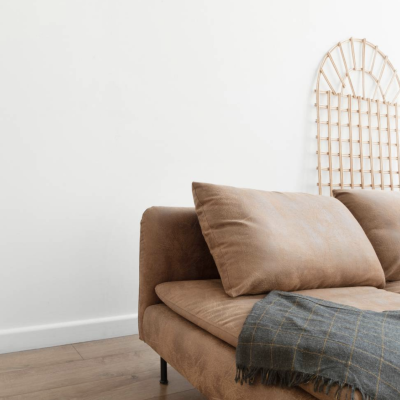
Material composition*Calcium Hydroxide (Lime) 40-70%, Water 10-30%, Calcium Carbonate 5-20%, Additives 1-5% *as reported by the manufacturer AVAILABLE SIZINGAvailable in 1L, 4L, 12.5L, and 15L COLORSAvailable in a wide range of colors. White is the only color with a C2C Gold Certification. CERTIFICATIONS & DISCLOSURES
Health Product Declaration (HPD)
Declare Label
Environmental Product Declaration (EPD)
Safety Data Sheet (SDS)
USDA Certified Biobased Product Label
Other
Cradle to Cradle | Silver
Last UpdatedJanuary 31, 2025 |
| Clayworks | Clay Plasters |
Clay PlastersAvailable At the Donghia Materials LibraryLow-Embodied Carbon MaterialClayworks clay plasters are blends of unfired clays mixed with natural minerals and pigments. They provide a 100% natural alternative for gypsum plaster and paint wall finishing. Clayworks clay plasters are non-toxic, avoid synthetic additives and emit zero VOCs or formaldehyde. They are free of heavy metals and can be composted. The clay plasters help regulate indoor relative humidity and temperature, absorb toxics and odors, and are easily repaired. They are made in the UK and supplied in a dried form, ready to mix with water and apply with conventional plastering tools and skills. The BM-1 hazard on the HPD relates to respiratory protection. The clay plasters also contribute to WELL and LEED certifications. Per Claywork's product-specific EPDs, this product meets HML's criteria for low embodied carbon. CategoryPlaster, ClayManufacturerClayworks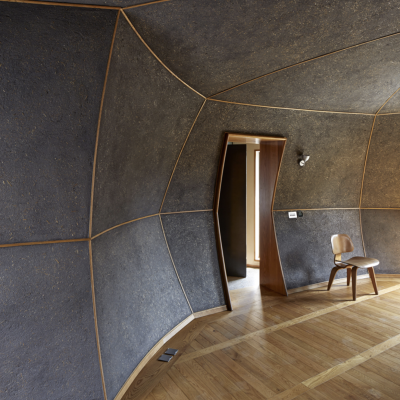
Material composition*Blended Sands, Kaolin, Other Proprietary Ingredients *as reported by the manufacturer CERTIFICATIONS & DISCLOSURES
Health Product Declaration (HPD)
Declare Label
Environmental Product Declaration (EPD)
Safety Data Sheet (SDS)
USDA Certified Biobased Product Label
Other
Additional DocumentsLast UpdatedFebruary 18, 2025 |
| Duracryl International | Durabella Terrazzo |
Durabella TerrazzoAvailable At the Donghia Materials LibraryLow-Embodied Carbon MaterialDurabella Terrazzo flooring is composed of marble aggregates and/or natural stones with a vegetable oil-based binder. This healthier alternative to epoxy flooring is Red List Free and passes VOC emissions standards for the level of Indoor Air Comfort. While the production of this product currently requires the use of isocyanates, the manufacturer avoids the more harmful toluene diisocyanate (TDI). Proper protection during installation is advisable at all times. Durabella is customizable and can be applied to interior and exterior surfaces. Per Duracryl's EPD, this product meets HML's criteria for low embodied carbon. CategoryResilient, BiobasedManufacturerDuracryl International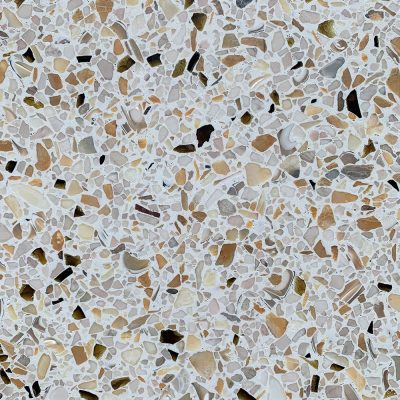
Material composition*Marble Aggregates 40-60%, Calcium Carbonate 15-18%, Castor oil 7.5-11.8%, HDI Activator 5-9%, Quercus suber bark 0.5-1%, C.I. Pigment Yellow 42 0.01-0.05%, Diiron Trioxide 0.01-0.05%, Iron oxide (Fe3O4) 0.01-0.05%, Titanium dioxide 0.01-0.05% *as reported by the manufacturer AVAILABLE SIZINGcustom poured CERTIFICATIONS & DISCLOSURES
Health Product Declaration (HPD)
Declare Label
Environmental Product Declaration (EPD)
Safety Data Sheet (SDS)
USDA Certified Biobased Product Label
Other
Additional DocumentsLast UpdatedJanuary 31, 2025 |
| Forbo Flooring Systems | Forbo MCT |
Forbo MCTUsed in Healthier Affordable HousingAvailable At the Donghia Materials LibraryLow-Embodied Carbon MaterialMarmoleum MCT tiles are made from natural materials such as linseed oil and rosin. The product is free from toxic materials such as phthalates. The modular tiles allow you to mix and match to design a unique floor surface. This product has a slightly thinner gauge at 2.0mm. Marmoleum MCT is 100% biobased according to Biopreferred.gov. Per Forbo's product-specific EPDs, this Marmoleum flooring system meets HML's criteria for low embodied carbon. CategoryResilient, LinoleumManufacturerForbo Flooring Systems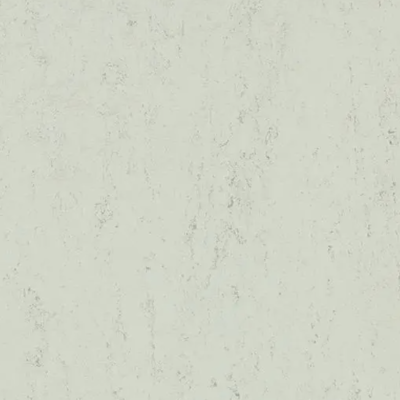
Material composition*Wood Flour 25-50%, Linseed Oil 24-45%, Reused Marmoleum 20-24%, Calcium Carbonate 13-23%, Gum Rosin 4-6%, PET backing 4%, Titanium Dioxide 2%, Pigments: 0-3% (Bayferrox red 130, Black PJ3013, Blue PS 5.1-87, Carbon Black pearls 120, Cromophtal Red K 3830 C20, IOX Yellow 02, Irgalite red K 4170 FP C20, Magnesium oxide (MgO), OMNICOLOR-orange DW23132006-PN, Red 147008-C20, Sicoplast V Blue 68-8110, Yellow 132026, Yellow PS 2.1-26, Zinc oxide), Finish 0-1% (Polyester Acrylate, Urethane Acrylate) *as reported by the manufacturer AVAILABLE SIZING13.11 in x 13.11 in x 0.08 in CERTIFICATIONS & DISCLOSURES
Health Product Declaration (HPD)
Declare Label
Environmental Product Declaration (EPD)
Safety Data Sheet (SDS)
USDA Certified Biobased Product Label
Other
Last UpdatedJanuary 31, 2025 |
| Forbo Flooring Systems | Marmoleum Modular |
Marmoleum ModularUsed in Healthier Affordable HousingAvailable At the Donghia Materials LibraryLow-Embodied Carbon MaterialMarmoleum Modular tiles are made from natural materials. The product has a low carbon footprint, and is free from toxic materials such as phthalates. The modular tiles allow you to mix and match to design a unique floor surface. Per Forbo's product-specific EPDs, these Marmoleum flooring system meets HML's criteria for low embodied carbon. It contains 100% Biobased Content and has been awarded the USDA Certified Biobased Product Label in the BioPreferred® Program. CategoryResilient, LinoleumManufacturerForbo Flooring Systems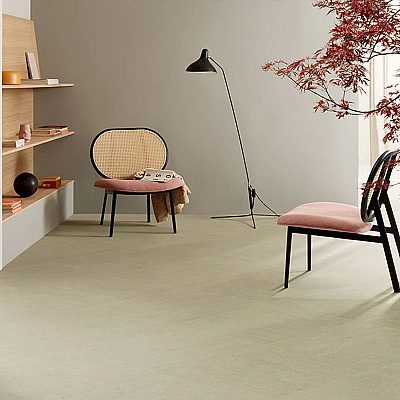
Material composition*Wood Flour 25-50%, Linseed Oil 24-45%, Reused Marmoleum 20-24%, Calcium Carbonate 13-23%, Gum Rosin 4-6%, PET backing 4%, Titanium Dioxide 2%, Pigments: 0-3% (Bayferrox red 130, Black PJ3013, Blue PS 5.1-87, Carbon Black pearls 120, Cromophtal Red K 3830 C20, IOX Yellow 02, Irgalite red K 4170 FP C20, Magnesium oxide (MgO), OMNICOLOR-orange DW23132006-PN, Red 147008-C20, Sicoplast V Blue 68-8110, Yellow 132026, Yellow PS 2.1-26, Zinc oxide), Finish 0-1% (Polyester Acrylate, Urethane Acrylate) *as reported by the manufacturer AVAILABLE SIZING9.8”x 9.8”, 9.8”x 19.69” and 19.69”x 19.69” Tiles COLORSAvailable in a variety of colors CERTIFICATIONS & DISCLOSURES
Health Product Declaration (HPD)
Declare Label
Environmental Product Declaration (EPD)
Safety Data Sheet (SDS)
USDA Certified Biobased Product Label
Other
Declare | Red List Free
Contributes to LEED credits
USDA Certified Biobased Product Label
Additional DocumentsLast UpdatedDecember 16, 2025 |
| Forbo Flooring Systems | Marmoleum Imagine |
Marmoleum ImagineUsed in Healthier Affordable HousingAvailable At the Donghia Materials LibraryLow-Embodied Carbon MaterialMarmoleum Imagine is made from natural materials and uses an Aquajet cutting technique to create the unique designs. The product has a low carbon footprint, and is free from toxic materials such as phthalates. The designs can be customized on request which allows for endless design possibilities. Per Forbo's product-specific EPDs, these Marmoleum flooring system meets HML's criteria for low embodied carbon. CategoryResilient, LinoleumManufacturerForbo Flooring Systems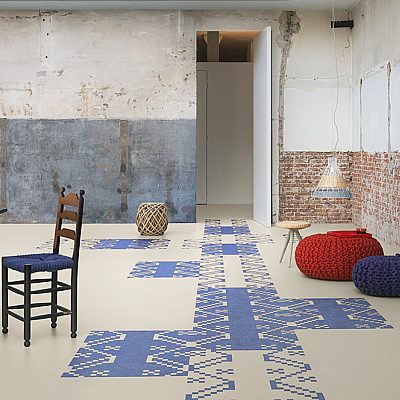
Material composition*Wood Flour 32-64%, Linseed Oil 24-31%, Reused Marmoleum 20-24%, Calcium Carbonate 19-22%, Gum Rosin 5-6%, Jute backing 10-30%, Pigments: 0-5% (Titanium Dioxide, Bayferrox red 130, Black PJ3013, Blue PS 5.1-87, Carbon Black pearls 120, Cromophtal Red K 3830 C20, IOX Yellow 02, Irgalite red K 4170 FP C20, Magnesium oxide (MgO), OMNICOLOR-orange DW23132006-PN, Red 147008-C20, Sicoplast V Blue 68-8110, Yellow 132026, Yellow PS 2.1-26, Zinc oxide), Finish 0-1% (Polyester Acrylate, Urethane Acrylate) *as reported by the manufacturer AVAILABLE SIZING2.5mm x 32m rolls, 2mm x 32m rolls COLORSAvailable in a variety of colors and designs CERTIFICATIONS & DISCLOSURES
Health Product Declaration (HPD)
Declare Label
Environmental Product Declaration (EPD)
Safety Data Sheet (SDS)
USDA Certified Biobased Product Label
Other
Declare | Red List Free
Contributes to LEED credits
Last UpdatedFebruary 05, 2025 |
| Forbo Flooring Systems | Marmoleum Signature |
Marmoleum SignatureUsed in Healthier Affordable HousingAvailable At the Donghia Materials LibraryLow-Embodied Carbon MaterialMarmoleum Signature tiles are made from natural materials. The product has a low carbon footprint, and is free from toxic materials such as phthalates. The modular tiles allow you to mix and match patterns to design a unique floor surface. They can also be custom designed as long as they fit in one of the modular tile sizes. Per Forbo's product-specific EPDs, these Marmoleum flooring system meets HML's criteria for low embodied carbon. CategoryResilient, LinoleumManufacturerForbo Flooring Systems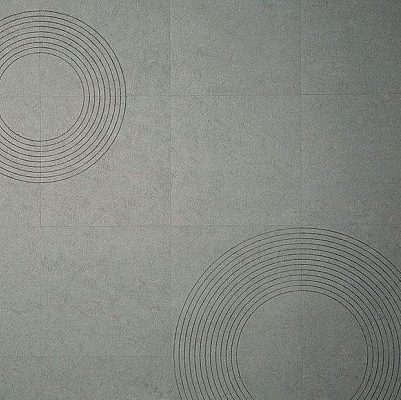
Material composition*Linseed Oil 24-34%, Calcium Carbonate 10-22%, Wood Flour 0-60%, Reused Marmoleum 0-24%, Gum Rosin 5-8%, Pigments 0-4% (Zinc Oxide, Magnesium Oxide, Carbon Black Pearls 120, Black PJ3013, Sicoplast V Blue 68-8110, Blue PS 5.1-87, Bayferrox Red 130, Irgalite Red K 4170 FP C20, Cromophtal Red K 3830 C20, Red 147008-C20, Omnicolor Orange DW23132006-PN, IOX Yellow 02, Yellow PS 2.1-26, Yellow 132026, Titanium Dioxide), PET 0-4%, TopCoat 0-1% (Polyester Acrylate, Urethane Acrylate) *as reported by the manufacturer AVAILABLE SIZING9.8”x 19.69” and 19.69”x 19.69” Tiles COLORSAvailable in a variety of colors and designs CERTIFICATIONS & DISCLOSURES
Health Product Declaration (HPD)
Declare Label
Environmental Product Declaration (EPD)
Safety Data Sheet (SDS)
USDA Certified Biobased Product Label
Other
Declare | Red List Free
Contributes to LEED credits
Additional DocumentsLast UpdatedFebruary 05, 2025 |
| Kährs | Multi Layer Flooring |
Multi Layer FlooringUsed in Healthier Affordable HousingAvailable At the Donghia Materials LibraryLow-Embodied Carbon MaterialKährs's 3-layer engineered hardwood flooring is made up of a surface layer, a core layer, and a backing. Surface treatments are free from solvents, formaldehyde and isocyanate. Engineered hardwood allows a floating installation on a level surface. This allows you to avoid potentially harmful adhesives and enables future disassembly and reuse. The AWARE collection is bio-based, PVC-free, and can be sanded/refinished to allow for a longer lifespan. *NOTE: This product is ULEF as opposed to NAF, meaning it contains ultra-low emitting formaldehyde. The products carry FloorScore emissions certification. Per Kahrs's EPD, this product meets HML's criteria for low embodied carbon. CategoryWood Flooring, Engineered WoodManufacturerKährs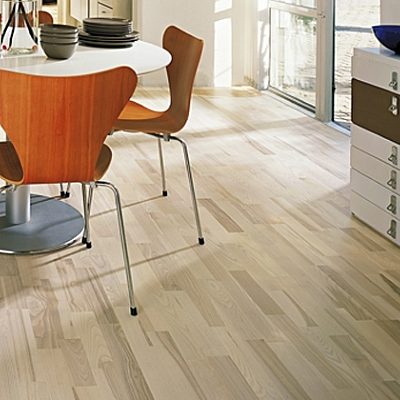
Material composition*Wood/Wood Fiber 93-94% [Amino Based Glue 2.6-3%, Carbamide Adhesive 1.0-2%, Lacquer Sherwin-Williams 0.8-1%, Filler 0.1%, Polyvinyl Acetate (PVA) 0.08-0.1%], Polyolefin Foam Plastic 0.4-0.5%, Polyester Foam - Bottom 0.5-0.5% *as reported by the manufacturer AVAILABLE SIZING72’’x 6 1/4” Plank; 3/8", 5/8", or 3/4" Thickness COLORSAvailable in a variety of wood species CERTIFICATIONS & DISCLOSURES
Health Product Declaration (HPD)
Declare Label
Environmental Product Declaration (EPD)
Safety Data Sheet (SDS)
USDA Certified Biobased Product Label
Other
FSC | Chain of Custody Certification
FloorScore
Nordic Swan Ecolabel
Additional DocumentsLast UpdatedFebruary 07, 2025 |
| mafi | Natural Wooden Flooring |
Natural Wooden FlooringAvailable At the Donghia Materials LibraryLow-Embodied Carbon Materialmafi is an Austrian company that specializes in the production of three-layer wooden planks that can be used as flooring, walls, or ceilings. mafi floors are finished using natural oils. Instead of creating a seal-like more typical lacquers, the oil soaks into the wood and protects it from the inside out. Because it does not create a barrier, the oil finish on mafi’s wood floors allows the material to breathe and to help regulate the interior climate and improve indoor air quality. The natural oil finish is also free of toxic solvents. All of the wood used in mafi's flooring is grown in Austria, within 12km ( 8 miles ) of the factory. Per Mafi's product-specific EPDs, this product meets HML's criteria for low embodied carbon. CategoryWood Flooring, Engineered WoodManufacturermafi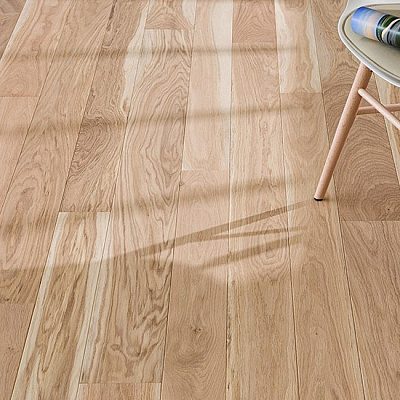
Material composition*Wood 98-100%, Polyvinyl Acetate Adhesive 0-1%, Natural Oils (Linseed Oil) 0-1% , Calcium Carbonate 0-1% *as reported by the manufacturer AVAILABLE SIZINGAvailable in a range of plank sizes COLORSOak, beech, ash, maple, walnut, acacia, spruce, larch, swiss stone pine, douglas fir, fir CERTIFICATIONS & DISCLOSURES
Health Product Declaration (HPD)
Declare Label
Environmental Product Declaration (EPD)
Safety Data Sheet (SDS)
USDA Certified Biobased Product Label
Other
Last UpdatedJanuary 31, 2025 |
| Patcraft | Ecosystem |
EcosystemAvailable At the Donghia Materials LibraryLow-Embodied Carbon MaterialShaw’s Patcraft’s Ecosystem are biobased flooring products composed of up to 50% vegetable oils. These include canola, rapeseed and castor oils. The floor compositions avoid orthophthalates, chlorine and solvents, and are FloorScore certified for low VOC. They are Cradle to Cradle certified SILVER and are Greenhealth Approved from Healthcare without Harm. Shaw’s biobased products are healthier alternatives for LVT, however, isocyanates still occur within the polyurethane processing method. Per Shaw's product-specific EPDs, this product line meets HML's criteria for low embodied carbon. CategoryResilient, BiobasedManufacturerPatcraft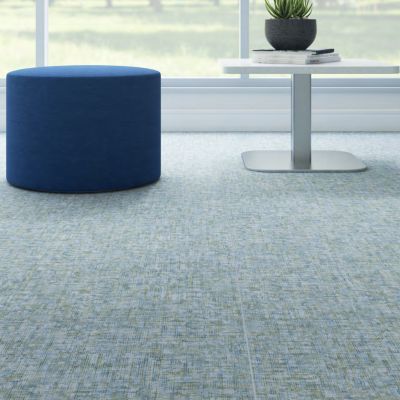
Material composition*Calcium carbonate 55-74%, Biobased Polyurethane 20-35%, Aluminum hydroxide 1-3%. Polyethylene Terephthalate (PET) < 3%, Zeolite 1-3%, Cellulose 0.5-2%, Fiberglass 0.5-2%. Undisclosed < 1% *as reported by the manufacturer AVAILABLE SIZING13 in x 26 in CERTIFICATIONS & DISCLOSURES
Health Product Declaration (HPD)
Declare Label
Environmental Product Declaration (EPD)
Safety Data Sheet (SDS)
USDA Certified Biobased Product Label
Other
Cradle to Cradle | Silver
FloorScore
Last UpdatedJanuary 31, 2025 |
| Shaw Contract | Innate + In Tandem |
Innate + In TandemAvailable At the Donghia Materials LibraryLow-Embodied Carbon MaterialShaw’s Innate + In Tandem are biobased flooring products composed of up to 50% vegetable oils. These include canola, rapeseed and castor oils. The floor compositions avoid orthophthalates, chlorine and solvents, and are FloorScore certified for low VOC. They are Cradle to Cradle certified SILVER and are Greenhealth Approved from Healthcare without Harm. Shaw’s biobased products are healthier alternatives for LVT, however, isocyanates still occur within the polyurethane processing method. Per Shaw's product-specific EPDs, this product line meets HML's criteria for low embodied carbon. CategoryResilient, BiobasedManufacturerShaw Contract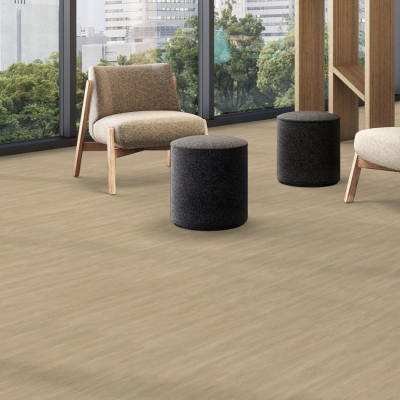
Material composition*Calcium Carbonate 55-74%, Biobased Polyurethane 20-35%, Aluminum Hydroxide 1-3%, PET 0-3%, Zeolite 1-3%, Cellulose 0.5-2%, Fiberglass 0.5-2%, Undisclosed 0-1% *as reported by the manufacturer AVAILABLE SIZING13 in x 26 in CERTIFICATIONS & DISCLOSURES
Health Product Declaration (HPD)
Declare Label
Environmental Product Declaration (EPD)
Safety Data Sheet (SDS)
USDA Certified Biobased Product Label
Other
Cradle to Cradle | Silver
FloorScore
Last UpdatedFebruary 05, 2025 |
| Duracryl International | Corques Liquid Lino |
Corques Liquid LinoAvailable At the Donghia Materials LibraryLow-Embodied Carbon MaterialCorques Liquid Lino offers a revolutionary way to use linoleum. An alternative to traditional rolls and tiles, this product from Duracryl International is sold as a liquid and poured onto a subfloor onsite. It sets overnight at ambient temperatures to create a seamless durable and natural looking resilient floor. Corques Liquid Lino is made from vegetable oil, cork, wood-flour, limestone, and natural color pigments. It is free of VOCs, PVC, plasticizers, formaldehyde, chlorine, and heavy metals. While the production of this product currently requires the use of isocyanates, the manufacturer avoids the more harmful toluene diisocyanate (TDI) Per Duracryl's EPD, this product meets HML's criteria for low embodied carbon. CategoryResilient, LinoleumManufacturerDuracryl International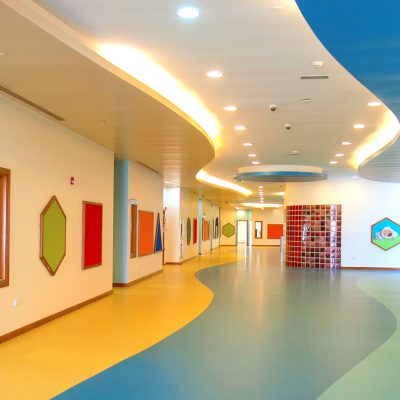
Material composition*Vegetable Oils, 40-50%, MDI Activator 15-25%, Aluminum hydroxide 10%, Quercus Suber Bark 5-10%, Linseed Oil 1-5%, Pigments 0.01-0.05% (C.I. Pigment Yellow 42 , Diiron Trioxide, Iron Oxide (Fe304), Titanium Dioxide) *as reported by the manufacturer AVAILABLE SIZINGN/A (Poured Material) COLORSAvailable in 54 Colors CERTIFICATIONS & DISCLOSURES
Health Product Declaration (HPD)
Declare Label
Environmental Product Declaration (EPD)
Safety Data Sheet (SDS)
USDA Certified Biobased Product Label
Other
Declare | Red List Free
Last UpdatedDecember 16, 2025 |
| Tarkett | Linofloor xf² |
Linofloor xf²Low-Embodied Carbon MaterialThe newly released Tarkett Linofloor xf² flooring (specifically "Veneto") replaces the Harmonium line, previously listed by HML. This linoleum product avoids toxic heavy metals, PVC, PFAS, urea-formaldehyde, phthalates, and halogenated flame retardants. Some pigments used hopefully can be replaced with healthier alternatives soon. Tarkett offers a take-back program for their products and offcuts are 100% recyclable. Lino xf² is a glue-down linoleum - be sure to select a healthier adhesive option when installing this product. Per Tarkett's product-specific EPDs, it's Linofloor xf₂ lines meet HML's criteria for low embodied carbon. Some thicknesses come with a polyurethane backing, it's best to avoid these as that increases its carbon impact. It contains 100% Biobased Content and has been awarded the USDA Certified Biobased Product Label in the BioPreferred® Program. CategoryResilient, LinoleumManufacturerTarkett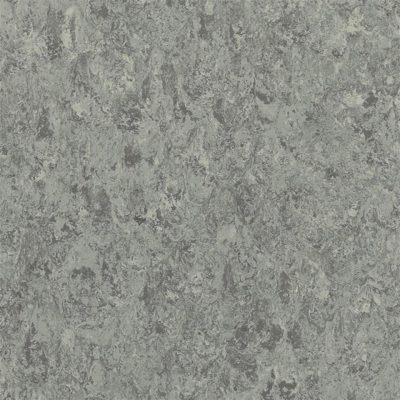
Material composition*Linseed Oil 29-30%, Cellulose 5-25%, Cork Flour 5-27%, Lignin 5-25%, Calcium Carbonate 22-24%, Jute 9%, Titanium Dioxide 4%, Rosin 4%, Wood Flour 0-3%, Polyurethane acrylic copolymer <0.66%, Iron Oxide <0.13-0.5%, Colophony 0.26-0.44%, C.I. Pigment Yellow 42 <0.13-0.4%, Carbon Black <0.13%, Pigment Red 101 <0.13% *as reported by the manufacturer AVAILABLE SIZINGRoll 6.5' x ≤ 100', 2.5mm thick COLORS66 CERTIFICATIONS & DISCLOSURES
Health Product Declaration (HPD)
Declare Label
Environmental Product Declaration (EPD)
Safety Data Sheet (SDS)
USDA Certified Biobased Product Label
Other
Cradle to Cradle | Gold
USDA Certified Biobased Product Label
Last UpdatedJanuary 31, 2025 |
| Patcraft | EcoWorx Carpet Tile |
EcoWorx Carpet TileAvailable At the Donghia Materials LibraryLow-Embodied Carbon MaterialPatcraft's EcoWorx carpet tile is a non-PVC backed carpet tile. Per manufacturer, all EcoWorx carpet tile with nylon are Cradle to Cradle Certified® Silver. Reverse is an exception, as the manufacturer set out to obtain a Gold level certification. Using a carefully curated selection of yarn colors for the collection, the styles of Reverse were able to pass the Cradle to Cradle Product Standard's Restricted Substance List (RSL) to achieve Gold in the Material Health pillar. This HPD relates to several EcoWorx collections, including Reverse and Artefact. All pigments fall below the 1000 ppm reporting threshold for the HPD and most pigments fall below the 100 ppm threshold for Declare, hence no need for separate (HPD/Declare) certifications for the C2C Gold collection. Shaw guarantees free reclamation and recycling at the end of use. Per Patcraft's product-specific EPD, this product meets HML's criteria for low embodied carbon. CategoryTufted Carpet Tile, SyntheticManufacturerPatcraft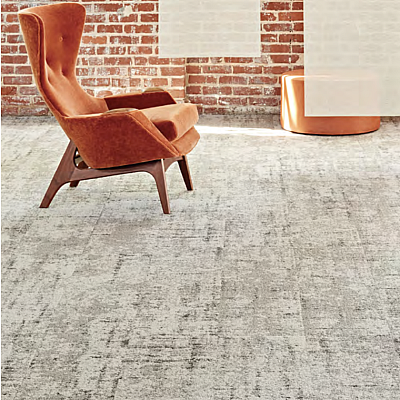
Material composition*Calcium Carbonate 22-58%, Ethene-1-Octene Copolymer 5-15%, Aluminum Trihydrate (ATH) 3-8%, Hydrocarbons C6-20 2-5%, Polyethylene Terephthalate (PET) 2-5%, Vinyl Acetate/Ethylene Copolymer 2-5%, Fiberglass 1-3%, Quartz 0.5-5%, Ethylene/Hexane-1Copolymer .1-2%, Nylon 6 Polymer 0-51%, Nylon 6.6 0-50%, Modified Acrylic Binder 0-1%, Polyvinyl Alcohol 0-1%, Resin Acids/Rosin Acids, Esters with Triethylene Glycol 0-1%, Tridecyl Alcohol Ethoxylate 0-1%, Undisclosed 0-1% *as reported by the manufacturer AVAILABLE SIZINGTile sizes are dependent on collection, ranging from 12"x48" x 24"x24" COLORSAvailable in a range of colorways CERTIFICATIONS & DISCLOSURES
Health Product Declaration (HPD)
Declare Label
Environmental Product Declaration (EPD)
Safety Data Sheet (SDS)
USDA Certified Biobased Product Label
Other
Cradle to Cradle | Gold
NSF/ANSI 140 | Gold
CRI Green Label Plus
Contributes to LEED credits
Additional DocumentsLast UpdatedFebruary 27, 2025 |
| Interface | Interface Carpet Tile |
Interface Carpet TileAvailable At the Donghia Materials LibraryLow-Embodied Carbon MaterialThe Embodied Beauty carpet collection by Interface takes strides towards healthier carpets through recycled Nylon yarns and its two biobased backing systems. The collection is Cradle to Cradle Certified® Silver and Red List Free. The Shishu Stitch, Tokyo Texture and Zen Stitch carpets use the CQuest BioX Backing System. This backing contains 74% Biobased Content and has been awarded the USDA Certified Biobased Product Label in the BioPreferred® Program. The BioX backings include carbon sequesting biochar as a filler. Interface has been GreenCircle Certified for their ReEntry Take Back Recycling program, with their carpets being 65-75% recyclable. The CQuest Bio backing system is a standard option on all Interface carpet tiles. This backing contains 47% Biobased Content and has been awarded the USDA Certified Biobased Product Label in the BioPreferred® Program. It is GreenHealth Approved from HealthCare without Harm. Per Interface’s EPD, this carpet collection and backing system meet HML's criteria for low embodied carbon. CategoryTufted Carpet Tile, SyntheticManufacturerInterface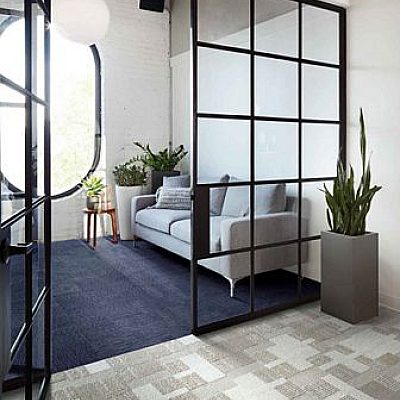
Material composition*Carpet Tile with CQUEST BIOX: Bio-Based Filler 28%, Bioester 16%, Nylon 13%, EVA 11%, Post-Consumer Recycled Nylon 7%, Pre-Consumer Recycled Limestone 7%, Vinyl Acetate Emulsion 5%, Pre/Post Consumer Recycled Polyester 3%, Alumina Trihydrate 3%, Biobased Oil 2%, Pre-Consumer Recycled Nylon 2%, Fiberglass Mat 1%, Antioxidant 1%, Polypropylene 1%, Ethylene/Acrylic Acid Copolymer 0.2-0.3%, Starch Soluble 0.2-0.3%, Acetic Acid Ethenyl Ester, Polymer with Ethenol 0.10%, Alcohols c12-14-Secondary Beta (2-Hydroxyethoxy-ethoxylsted E0 10 Moles) 0.10%, White Mineral Oil 0.10%, Titanium Dioxide 0.10%, Carbon Black 0.10% Carpet Tile with CQUEST BIO: Pre-consumer Recycled Limestone 43%, Post-Consumer Recycled Nylon 12%, Bioester 8%, EVA 7%, Pre-Consumer Recycled Nylon 6%, Vinyl Acetate Emulsion 5%, Bio-Based Filler 4%, Nylon 3%, Pre/Post Consumer Recycled Polyester 3%, Alumina Trihydrate 3%, Bio-based oil 2%, Polypropylene 1%, Fiberglass Mat 1%, Ethylene/Acrylic Acid Copolymer 0.2-0.3%, Starch Soluble 0.2-0.3%, Acetic Acid Ethenyl Ester, Polymer with Ethenol 0.10%, Alcohols, c12-14-Secondary, Beta (2-Hydroxyethoxy-ethoxylsted E0 10 Moles) 0.10%, White Mineral Oil 0.10%, Titanium Dioxide 0.10%, Carbon Black 0.10% *as reported by the manufacturer AVAILABLE SIZING25cm x 1m CERTIFICATIONS & DISCLOSURES
Health Product Declaration (HPD)
Declare Label
Environmental Product Declaration (EPD)
Safety Data Sheet (SDS)
USDA Certified Biobased Product Label
Other
Cradle to Cradle | Silver
Declare | Red List Free
CRI Green Label Plus
GreenCircle Certified
GreenCircle Certified
USDA Certified Biobased Product Label
Last UpdatedOctober 23, 2025 |
| Lunawood | Thermowood |
ThermowoodLow-Embodied Carbon MaterialLunawood Thermowood avoids chemicals in its manufacturing processes, relying solely on a treatment with high heat and steam that enhances the wood's durability. This allows for an extended lifetime and a surface that requires no finishing and less routine maintenance, regardless of climate. However, applying paints, oils, and other finishes is possible (please see HML's list of healthier finishes for recommendations). Since the processing eliminates natural resins, no resin will secrete through any applied finish or paint. Available in Finland and North America. Per EPD, this product meets HML's criteria for low embodied carbon. CategoryDimensional Surface, Solid WoodManufacturerLunawood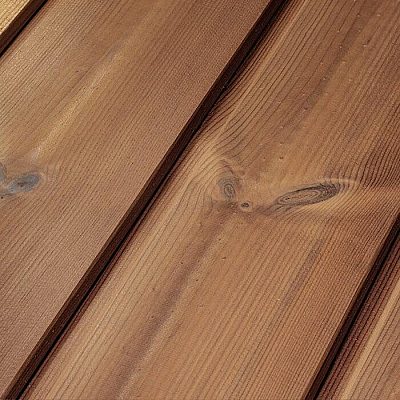
Material composition*Solid Wood 100% *as reported by the manufacturer CERTIFICATIONS & DISCLOSURES
Health Product Declaration (HPD)
Declare Label
Environmental Product Declaration (EPD)
Safety Data Sheet (SDS)
USDA Certified Biobased Product Label
Other
Nordic Swan Ecolabel
PEFC
Last UpdatedOctober 07, 2025 |
| Graphenstone | Naturglue Premium |
Naturglue PremiumLow-Embodied Carbon MaterialThe Naturglue Premium is an adhesive mortar with high calcium carbonate content, lime and graphene technology. It is a bi-component mortar, the MortarBase Premium + Kalgraphin Premium are mixed on site. It can be used for ceramic, tiles and insulation boards. It is VOC free and CradletoCradle GOLD (overall rating) certified. According to Graphenstone's EPD which covers their premium mortars, this product meets HML's criteria for low embodied carbon. *NOTE: Recently, researchers have raised health concerns about graphene. According to the manufacturer, Graphenstone uses Nano Fibers of Graphene (NFG), which has a larger structure that is not harmful to human health. CategoryMortar, LimeManufacturerGraphenstone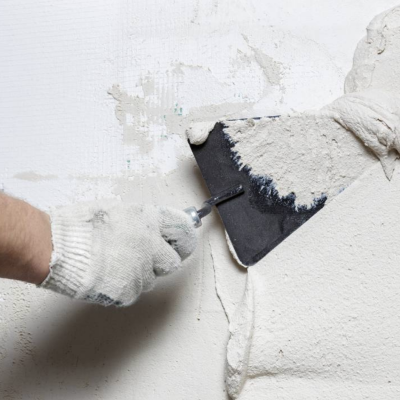
Material composition*Calcium carbonate 60-80%, Aerial lime 20-40%, Graphene 0.1%, *as reported by the manufacturer CERTIFICATIONS & DISCLOSURES
Health Product Declaration (HPD)
Declare Label
Environmental Product Declaration (EPD)
Safety Data Sheet (SDS)
USDA Certified Biobased Product Label
Other
Cradle to Cradle | Gold
Cradle to Cradle Material Health | Gold
Last UpdatedJanuary 29, 2025 |
| Søuld | Søuld |
SøuldAvailable At the Donghia Materials LibraryLow-Embodied Carbon MaterialSøuld creates eelgrass acoustic boards for ceilings and walls which achieves C2C Gold and Material Health Platinum certification. Eelgrass is a renewable marine plant and local in Denmark, traditionally used over decades for roof thatching. Note: A synthetic binder is used. Panels are to be 100% recyclable. Per Søuld's EPD, this product meets HML's criteria for low embodied carbon. CategoryAcoustics, EelgrassManufacturerSøuld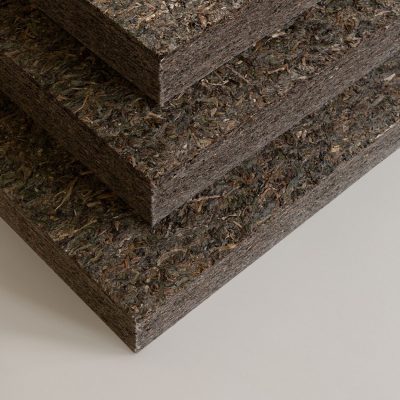
Material composition*70-87.5% Eelgrass, 10-12.5% Bi-component Synthetic Binder (Fibervision), 0-20% Flame Retardant (Burnblock) *as reported by the manufacturer AVAILABLE SIZING18mm, 35 mm, and 40mm thicknesses CERTIFICATIONS & DISCLOSURES
Health Product Declaration (HPD)
Declare Label
Environmental Product Declaration (EPD)
Safety Data Sheet (SDS)
USDA Certified Biobased Product Label
Other
Cradle to Cradle | Gold
Cradle to Cradle Material Health | Platinum
Last UpdatedSeptember 15, 2025 |
| Bioforcetech | OurCarbon |
OurCarbonAvailable At the Donghia Materials LibraryLow-Embodied Carbon MaterialOurCarbon is a colorant and material additive from biochar to replace fossil-derived carbon black. Made through a process of converting municipal waste solids, the biochar is currently in use within Solid Carbon, Model No, and Rethink Black. It is approved for use in food packaging in the EU. Located in California, OurCarbon is a material under the company Bioforcetech. OurCarbon fixes carbon content in a stable form and the proprietary process has been proven to remove PFAS from biosolids, a municipal waste stream. It meets International Biochar Initiative biochar standards. OurCarbon has an LCA per EPD. It has been awarded the USDA Certified Biobased Product Label in the BioPreferred® Program. "Biosolids, for example, is a municipal waste stream produced every day around the world at wastewater treatment plants at the scale of 350,000 tons a day." CategoryPigment / Biobased, BiocharManufacturerBioforcetech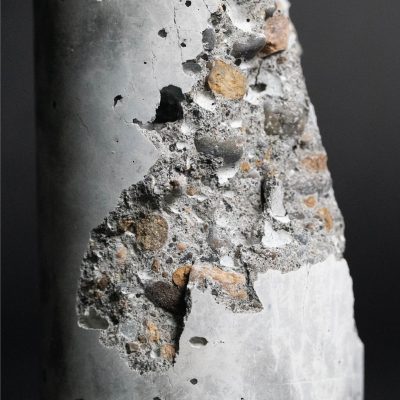
Material composition*Biochar *as reported by the manufacturer CERTIFICATIONS & DISCLOSURES
Health Product Declaration (HPD)
Declare Label
Environmental Product Declaration (EPD)
Safety Data Sheet (SDS)
USDA Certified Biobased Product Label
Other
IBI Biochar Certification Program
Last UpdatedOctober 23, 2025 |
| GUTEX |
Thermoflex
|
ThermoflexAvailable At the Donghia Materials LibraryLow-Embodied Carbon MaterialAvailable in the EUGutex Thermoflex is a wood fiber board insulation that makes use of the wood inherent lignin as binder and therefor avoids polyurethane. It can be used between studs, in post and beam interior and exterior wall structures, as between-rafter insulation and in ceilings. Thermoflex's Nominal thermal conductivity λD is 0.036 Per Gutex's product-specific EPD, Thermoflex meets HML's criteria for low embodied carbon. CategoryInsulation / Fibrous, Cellulosic, Granular, WoodManufacturerGUTEX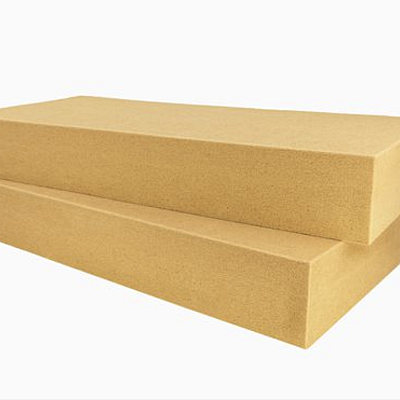
Material composition*90% Untreated fir and spruce, 6.0 % ammonium salts, approx. 5.0 % textile binder fibre (cotton) *as reported by the manufacturer CERTIFICATIONS & DISCLOSURES
Health Product Declaration (HPD)
Declare Label
Environmental Product Declaration (EPD)
Safety Data Sheet (SDS)
USDA Certified Biobased Product Label
Other
Additional DocumentsLast UpdatedFebruary 20, 2025 |
| ProClima | Tescon Vana |
Tescon VanaLow-Embodied Carbon MaterialThe ProClima Tescon Vana Adhesive Tape is a silicone-coated paper with a polypropylene fleece backing for interior or exterior use. It is typically used indoors for membranes and wood-based panels, or outdoors for windproofing and rainproofing. It has been tested to last for 100 years. It is Nordic Ecolabel certfied and LBC Red List Free. CategorySealant / Window, Joint TapeManufacturerProClima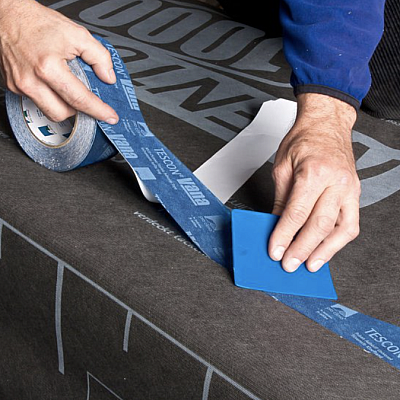
Material composition*Poly Bulyl Acrylate Solution, Polypropylene, Hindered Amine Light Stabilizer, Oligomeric Hindered Amine Light Stabilizer *as reported by the manufacturer CERTIFICATIONS & DISCLOSURES
Health Product Declaration (HPD)
Declare Label
Environmental Product Declaration (EPD)
Safety Data Sheet (SDS)
USDA Certified Biobased Product Label
Other
Last UpdatedJanuary 29, 2025 |
The products in this collection have all been evaluated holistically for their contents and performance. To be considered, a product must disclose at least 75% of its ingredients by weight. It should avoid the biggest health concerns (such as those indicated in the HML Spec guidance for the respective product category) or be third-party certified for Material Health.
All products are evaluated based on their embodied carbon (kg of CO₂eq per square meter) provided that LCA and EPD documentation is available. Products that meet the benchmark of less than 5 kg of CO₂eq per square meter meet HML Standard for LEC and are marked as such.
Spec Guidance
Inquire with manufacturers for transparency and LCA information as much as possible. Materials new to the market may not yet have certifications and disclosures and often are made proprietarily.
Prefer carbon sequestering materials whenever possible. Examples include timber, hempcrete, plant fibers, wool, clay, and lime.
Prefer locally produced products. Carbon emissions from transporting products increase the overall footprint and may lead to a product becoming a large source of carbon emissions.
Consider reuse and retrofit rather than new construction whenever possible.
Reconsider structure and foundation. Steel and concrete are currently the largest sources of CO₂eq in the built environment. Timber structures sequester rather than emit carbon.
Consider installation details that do not require adhesives (which have high embodied carbon).
Encourage manufacturers to analyze the environmental impact of their products and provide EPDs.
Look for products with EPDs that indicate *low or no Global Warming Potential (GWP) per functional unit.
Consider conducting a Life Cycle Assessment (LCA) of your project before beginning.
Consider the ratio of renewable to nonrenewable energy being used in the manufacturing of a product.
Updated January 28, 2022
Related Videos
Carbon + Chemicals
Wondering about embodied carbon in design and construction?
Pelle Much-Peterson, creator of The Construction Material Pyramid, and Martha Lewis, Head of Materials at Henning Larsen present this new provocative tool and discuss the impacts of embodied carbon and chemicals found in building materials.
Carbon Panel from Material Health: Design Frontiers
Interested to learn about innovations from designers determined to lower carbon emissions?
Learn from Andrea Lipps, Charlotte McCurdy, and Julia Lohmann as they present beautiful projects made with low carbon emissions in mind.
Related Tools and Guides
Join Our Academic Network
Get Access to our carefully researched and curated academic resources, including model syllabi and webinars. An email from an academic institution or a .edu email address is required. If your academic institution does not use .edu email addresses but you would like to join the network, please contact healthymaterialslab@newschool.edu.
Already have an account? Log in